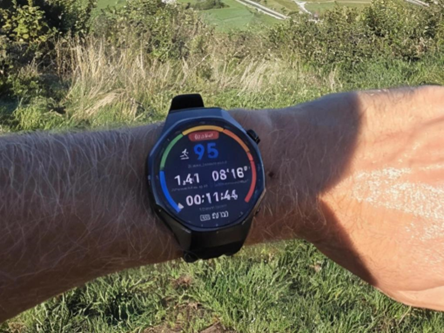Training for a first 5K can feel exciting, motivating, and a little intimidating, especially if running is new or if past attempts felt discouraging. Many beginners wonder how to start without overdoing it, how to stay consistent with a busy life, and how to feel confident enough to show up on race day. The key is to build a routine that works with your body, your schedule, and your energy rather than forcing yourself into something overwhelming. With the right approach, running becomes enjoyable, manageable, and even relaxing, offering both physical benefits and a sense of personal accomplishment. In this article, we will explore how to train smart, stay motivated, and cross your first finish line feeling proud and strong.

Start with the Right Foundation
Assessing Your Current Fitness Level Realistically
Beginning where you truly are helps prevent frustration and injury while making early progress feel rewarding rather than exhausting. Some beginners can walk briskly for twenty minutes, while others may only manage a slower pace, and both are perfectly acceptable starting points. Paying attention to breathing, comfort, and how your body feels afterward gives you clues about what level feels appropriate. A gentle self-check builds confidence and helps you recognize improvement sooner because even small gains become noticeable. This realistic view becomes the base that your training builds upon, step by steady step.
Setting Achievable Goals for Your First Race
Goals that are clear and manageable create direction without pressure, helping you enjoy training instead of fearing it. Aiming simply to finish, to run longer stretches, or to feel comfortable throughout the race are all valid objectives for first-time runners. These goals allow room for progress at a pace that feels natural rather than rushed or competitive. Celebrating small accomplishments—like running one minute longer or feeling less winded—keeps motivation growing. With each milestone, confidence rises, and the finish line begins to feel realistic rather than distant.
Building Endurance the Smart Way
Why the Run-Walk Method is Your Secret Weapon
Alternating gentle running with walking helps beginners build stamina without overwhelming muscles, lungs, or joints. This method allows recovery built right into the workout, making sessions feel manageable while still improving endurance. Many people find that they can go farther and feel more positive afterward when they use this rhythm. It also helps you stay consistent because workouts feel achievable even on low-energy days. Over time, the walking portions naturally shorten as your body adapts, creating progress that feels smooth and sustainable.
How to Gradually Increase Distance Without Injury
Increasing distance slowly helps your body strengthen tendons, joints, and muscles while avoiding strain that can interrupt training. A simple rule is to add only small increments each week so your body adjusts comfortably. Paying attention to how you feel during and after runs helps guide how quickly you should increase. You might come across the question of what is cadence in running when noticing how your steps and pace interact with comfort, because smooth rhythm supports injury prevention. This awareness turns distance growth into a patient process rather than a rushed challenge.
Essential Gear for Comfort and Performance
Comfortable clothing that moves easily, socks that prevent rubbing, and shoes that feel supportive can make training more enjoyable from the first run. You do not need specialized equipment to begin, but choosing items that reduce discomfort helps you stay consistent. Running in weather-appropriate layers and choosing fabrics that breathe can make early morning or evening sessions feel pleasant rather than uncomfortable. For those who like to track their progress, a device such as a Huawei Watch can offer useful insights—monitoring heart rate, supporting recovery, and helping to maintain a steady pace. Feeling physically comfortable helps your focus shift from struggle to enjoyment, which is key to building long-term habits.

Creating Your Training Schedule
A simple three-day-per-week routine gives your body time to adapt while still building momentum. Spacing running days apart allows recovery so muscles feel ready rather than fatigued before each session. Adding optional light activities—like stretching or casual walking—can help keep your body loose without adding stress. Planning your runs around your lifestyle makes consistency easier, whether mornings feel calm or evenings offer more freedom. A thoughtful schedule becomes a supportive guide rather than a rigid demand, helping you stay committed and relaxed.
Listening to Your Body and Preventing Injury
Recognizing the Difference Between Discomfort and Pain
Mild tightness, warmth, or fatigue is normal when building endurance, but sharp or persistent pain signals a need to slow down. Learning to interpret these sensations helps you protect your progress rather than pushing through and risking setbacks. Adjusting pace, shortening distance, or taking an extra rest day can prevent temporary discomfort from becoming a real injury. Trusting these signals builds confidence because you learn how to respond wisely instead of guessing. This awareness supports long-term training and keeps running enjoyable.
Simple Warm-up and Cool-down Routines
A gentle warm-up wakes the muscles and increases circulation, helping the body prepare for movement smoothly. Easy movements like ankle rolls, relaxed walking, or light stretches can prevent early stiffness during a run. Cooling down afterward allows the heart rate to settle and reduces tightness that might appear later in the day. These simple routines require only a few minutes but make a noticeable difference in comfort and recovery. Developing these habits adds protection and balance to every training session.
Nutrition and Hydration for Runners
Eating light, easily digestible foods before a run helps maintain energy without discomfort, especially for morning runners. Staying hydrated throughout the day supports performance more effectively than drinking large amounts right before running. After training, gentle refueling with balanced foods supports muscle recovery and keeps energy steady. Listening to hunger, thirst, and comfort cues helps you learn what your body prefers during training. Over time, these patterns become intuitive, making nutrition feel supportive rather than complicated.
Mental Preparation for Race Day
Visualizing the course, pacing yourself, and reminding yourself that finishing is the real accomplishment can calm nerves. Practicing runs at the same time of day as the race can help your body feel familiar and relaxed. Laying out clothing, preparing breakfast ideas, and planning arrival time adds a sense of calm. Encouraging thoughts help replace doubt with excitement, especially when remembering the progress you’ve made. Confidence grows from preparation, not perfection, and that mindset carries you across the finish line.
Conclusion
Training smart for your first 5K means listening to your body, progressing gradually, and celebrating every step. With patience and consistency, running becomes enjoyable rather than overwhelming. Each run strengthens confidence as well as endurance, making race day feel familiar and achievable. The finish line becomes a moment of pride, marking not just a distance completed but a journey embraced. Your first 5K is only the beginning of what you can do.
